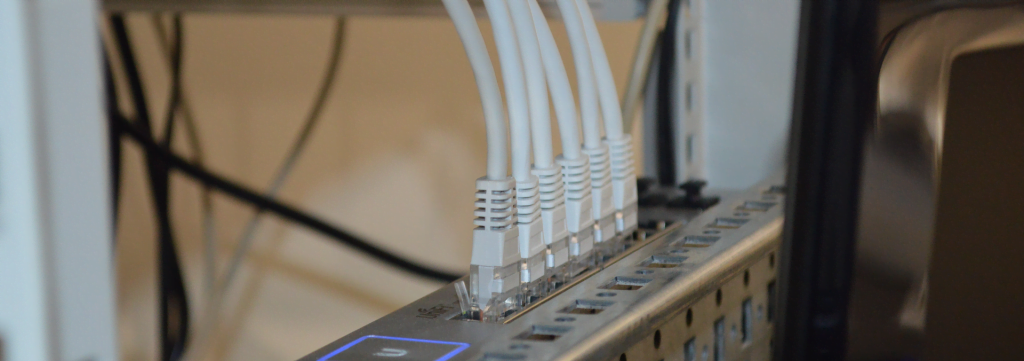Updated: November 11, 2024
Usually, utility service providers pick a billing approach based on what is the most convenient for a current business model. Of course, they factor in the wants and needs of their clients.
Yet, when the company scales up, a particular business system may fail development ambitions. Regulatory changes and the government’s initiatives (e.g., covering partially energy bills of vulnerable households) might also require new plans and tariffs that a legacy utility billing system cannot handle.
These are some of the signs that it’s time to consider another more enhanced energy billing solution. What are others? Take a look.
1. High customer churn rate

Last year in the UK, 40% of energy complaints forwarded to Citizens Advice were directly related to inaccurate billing. The charity states that the main reason is the utility companies’ ‘failing in their most basic obligation to customers”. Client service blunders made some households face incorrect demands for pounds and threats of bailiffs if they dispute them.
Weak IT systems, erroneous metering data, and mismatched accounts are the main reasons for inaccurate charges and, thus, customer churn.
Additionally, the current Europe energy crisis, which promises to increase electricity bills by 51% adds to the overall bill agony.
Utility CIOs must face this reality and ensure a sustainable future by considering the adoption of a new utility billing system. It should allow accurate, transparent, easy-to-read charging, regardless of the number of items being included in the invoice.
The solution requires a full-featured, built-in rating engine that delivers accurate charging. Another crucial component is a taxation engine. The tool should automatically apply correct taxes, based on location, and implement changes if new regulation is brought forward.
At MaxBill, we also help E&U businesses leverage our churn rate predictive model that allows them to predict at-risk contracts and prevent customer attrition.
2. Underserving customers with the lack of contact strategies
As one utility SEO said, “As a water company, if you have a much higher smart meter penetration, you get a higher propensity to contact.” Otherwise, people think they do not control consumption and face some leakage. What are other contact strategies?
These strategies include multichannel support, where digital platforms, phone assistance, and self-service tools are provided so customers can choose their preferred method of contact. Many clients, particularly those who seek quick answers or have straightforward inquiries, benefit from self-service options that reduce the need for direct interaction.
Additionally, segmenting customer service by grouping clients—such as vulnerable customers, financially impacted individuals, or tech-savvy users—enables utilities to personalize interactions and improve overall satisfaction.
Implementing these contact strategies effectively relies on certain enablers. A flexible technology infrastructure that integrates communication channels ensures customers experience a seamless interaction.
Empowering and training customer service agents to handle a wide array of inquiries efficiently improves resolution times and enhances customer satisfaction. By leveraging data analytics, companies gain insight into customer preferences, behaviors, and pain points, enabling more targeted service delivery.
3. Isolated utility billing systems causing too complex infrastructure
Some utility companies are using a series of systems that are scattered and cannot be integrated into a single unit. When the number of services increases, it becomes more and more complicated to operate all the separate structures.
This slows down business processes and halts the introduction of a standardised billing framework. Such a bottleneck even sabotages a potential business scale-up (e.g., adding new municipalities to a customer list).
Utility CIOs may find two solid ways out there – centralising all the services under one efficient solution and implementing the multi-tenant architecture.
Both come as built-in in a powerful utility billing platform. It’s worth mentioning that such IT changes may be cost-efficient and do not break a corporate budget.
Related:
Digital Transformation: Real-World Examples & Best Practices in Energy & Utility – PART III
Modernising Utility Billing and CRM Systems: Practical Scenarios for Successful Energy Transition
4. Dependence on manual billing processes

Using spreadsheets is the most common practice. When the business is set out to provide more service packages and add new pricing models, keeping several spreadsheets will kill the day-to-day workload (and the overall performance, in the long run) by making it super cumbersome.
The customer lifecycle in utilities is dynamic. From time to time, they might want to include new services or vice versa – suspend certain ones.
An automated utility bill processing removes such a headache from the equation. Obviously, some steps of the billing process will always be manual (e.g., controls companies put after the introduction of new tariffs). However, automated workflows aligned with other business processes will save the day.
Related:
Utility customer experience: how automation tackles key challenges
5. Incorporating new pricing models is problematic
A “one-size-fits-all” billing solution is an obsolete concept. It goes against the introduction of new pricing models, especially when it’s about ‘stretching’ to a new customer base, unveiling new service rollouts, and enabling customer segmentation.
The transition to advanced utility bill management software that impeccably integrates novel and multiple pricing models and their diverse demands is a no-brainer nowadays.
Ultimately, the billing system that utility service providers use should feature any type of charging: recurrent, one-time, consumption-based, volume-based, rule-based, etc.
Different conditions have to be factored in when producing various layouts for invoices, communication messages, and so on but altogether leaving all the involved satisfied.
6. Limitations with market expansion

Any kind of inefficiency, inflexibility, lagging, etc. hinders the market expansion and any business development. And vice versa, an enhanced billing system streamlines processes and creates room for scale-up.
For example, a utility company has integrated a unified utility billing platform for municipalities in Portugal. It has all the chances to repeat the success through the Community of Portuguese Language Countries and in the countries served by this company.
The solution allows changing currencies or languages, enables multiple payment methods, and applies appropriate tax codes, based on the location.
Only the transition to a brand new, comprehensive billing approach can become a game-changer. The company can grow both in numbers (e.g., First Utility, now Shell Energy, made it from 50k service points to 2M ) and in services provided (e.g., CTT in Portugal and throughout the PALOP).
7. No technical capability to quickly react to the changing regulatory landscape
Obviously, the regulatory landscape in utility is changing. Today, it’s more vital than ever due to multiple reasons: the EU trying to navigate between the recovery after the Covid pandemic, current gas supply switch-offs orchestrated by Russia; ‘dramatic shifts’ in utility regulations due to energy transition, and so on.
To illustrate, this whole gas situation makes energy prices increase dramatically. To react to this surge, in August 2022, Ofgem announced a new price cap level and tightened up rules on suppliers.
To remind readers, this organisation stands for the Office of Gas and Electricity Markets, the government watchdog for the electricity and downstream natural gas markets in the UK.
The Ofgem’s requirements mentioned above are multiple and not subject to this piece. But the point is clear here: there is a strong need for companies to use the utility bill management software that encompasses the market changes and technological capacity to adapt to new regulations.
Ideally, looking for a technology-driven solution comprising RPA, automation, and interfacing will be just the thing in the current constantly changing regulatory environment.
Related:
Half-Hourly Settlement: Is Your Utility Business ‘Reform-Able’?
It’s time to upgrade: changes can be impactful
Does any of these red flags resonate with you? Consider updating your utility bill processing. By implementing MaxBill smart billing solution, utility companies can tackle new regulations and harsh competition, meet evolving customer expectations, and deal with aging infrastructures.
It will also help keep the focus on environmental sustainability. MaxBill’s approach ensures maximum scalability for public utilities, property managers, and municipalities that are serving large consumers, businesses, and domestic.
Get your key business processes automated, customer journeys streamlined, and your service portfolio diversified and expanded. While having full control over revenue streams, utility organisations become empowered to drive higher profits and grow their businesses exponentially.
































